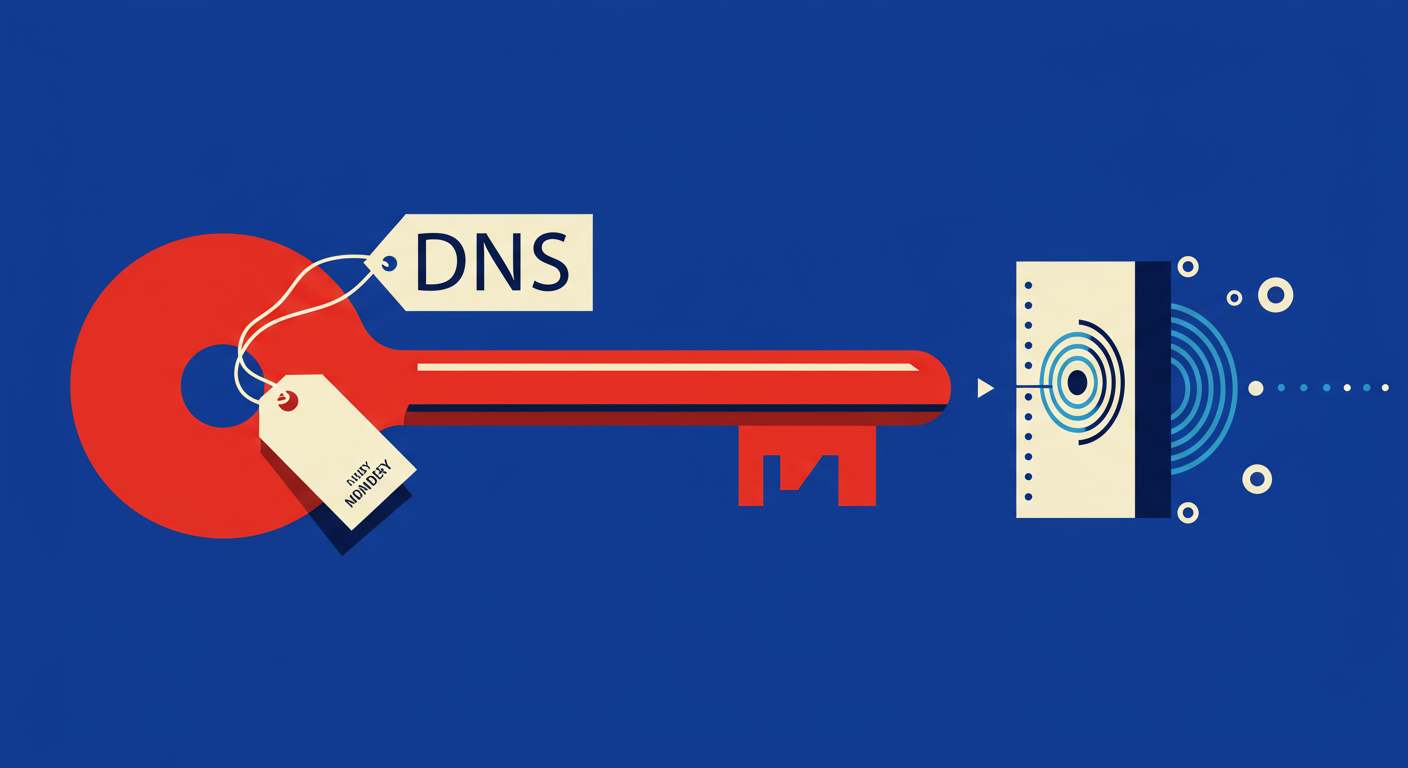
When you're diving into the world of email authentication, you quickly come across a trio of acronyms: SPF, DMARC, and DKIM. While they all work together to protect your domain from spoofing and phishing, DKIM has a unique component that often causes a bit of confusion: the DKIM selector. It's a small but vital piece of the puzzle that ensures your emails are trusted by receiving mail servers.
Think of it this way: your domain might send emails from multiple platforms. You could use Google Workspace for your corporate mail, Mailchimp for marketing newsletters, and a separate service for transactional receipts. A DKIM selector is simply a label that helps the recipient's email server find the correct public key to verify that an email truly came from the service it claims to. Without it, the server wouldn't know which of your many keys to use.
A DKIM selector name can technically be any string of characters you like, as long as it adheres to DNS naming rules and doesn't exceed 63 characters. This string becomes part of the DNS record name where your public key is stored. The format always follows the pattern of selector._domainkey.yourdomain.com. It’s this structure that allows a receiving server to perform a DNS lookup and retrieve the right key for verification.
The primary purpose of having different selectors is to support multiple, simultaneous DKIM keys on a single domain. This is essential for organizations that use various third-party services to send email on their behalf. Each service will require its own DKIM setup, and that means each one needs a unique selector to avoid conflicts. You can't have two different DNS records with the exact same name.

While you could name your selector 'bob' or 'xyz123', it's much better to use a logical naming convention. This makes managing your DNS records far easier, especially as the number of sending services grows. A great practice is to include the name of the service or the date the key was implemented. For example, a selector named sendgrid-2024 tells you exactly what it's for and when it was set up.
This also makes key rotation, a recommended security practice, much more straightforward. You can prepare a new key with a selector like sendgrid-2025 ahead of time, and then simply instruct your sending service to switch to the new selector when you're ready to make the change. This process ensures a seamless transition without any interruption to your email signing.
Most of the time, you won't be inventing a selector name yourself. The email service provider you are setting up will provide you with the exact selector they require. Many of the largest platforms use consistent, standardized DKIM selectors across all their customers to simplify the setup process.
For instance, you'll find that some of the most common services have predictable selectors:
The key takeaway is to never assume. Always copy the selector name directly from the instructions provided by your sending service. A small typo in the selector will cause the entire DKIM verification process to fail, as the receiving server will be looking for a DNS record that doesn't exist.
As your organization's email ecosystem becomes more complex, so does your DNS zone. You might end up with half a dozen or more DKIM records, each with a unique selector pointing to a different public key. This is perfectly normal and is, in fact, a sign of a well-configured email authentication setup.
Let's look at what the DNS DKIM record actually looks like. It's a TXT record, and its name (or host) is where the selector is used. The value of the record contains the public key and other information. Here's an example for a selector called marketing-2024 for the domain example.com.
marketing-2024._domainkey.example.com. IN TXT "v=DKIM1; k=rsa; p=MIIBIjANBgkqhkiG9w0BAQEFAAOCAQ8AMIIBCgKCAQEA..."When an email server receives a message signed with the selector marketing-2024, it knows to query DNS for marketing-2024._domainkey.example.com to find the public key needed for verification. If you were to add another service, it would have a different selector, such as transactional-mail._domainkey.example.com, allowing both to coexist peacefully.
Managing these effectively comes down to good record-keeping. Using descriptive selectors is the first step. The second is to periodically review your DNS records and remove any DKIM keys associated with services you no longer use. This keeps your DNS zone clean and reduces the potential attack surface, however small.
Ultimately, the DKIM selector is a simple yet powerful mechanism. It enables the entire system of cryptographic verification to function across multiple sending platforms, which is a necessity for almost any modern business. By understanding how selectors work and what names to use, you're taking a critical step toward mastering your email deliverability and domain security.
While there are common patterns like those from Google and Microsoft, remember that the selector is defined by the sending system. Your job is to accurately copy that selector and the corresponding key into your domain's DNS settings. Get that right, and you'll be well on your way to a more secure and trustworthy email presence.








